- Home
- Tad Williams
(Shadowmarch #1) Shadowmarch
(Shadowmarch #1) Shadowmarch Read online
Table of Contents
Title Page
Copyright Page
Dedication
PART ONE - BLOOD
Chapter 1 - A Wyvern Hunt
Chapter 2 - A Stone in the Sea
Chapter 3 - Proper Blue Quartz
Chapter 4 - A Surprising Proposal
Chapter 5 - Songs of the Moon and Stars
Chapter 6 - Blood Ties
Chapter 7 - Sisters of the Hive
Chapter 8 - The Hiding Place
Chapter 9 - A Gleam of Pale Wings
Chapter 10 - Halls of Fire
Chapter 11 - Bride of the God
Chapter 12 - Sleeping in Stone
PART TWO - MOONLIGHT
Chapter 13 - Vansen’s Charge
Chapter 14 - Whitefire
Chapter 15 - The Seclusion
Chapter 16 - The Grand and Worthy Nose
Chapter 17 - Black Flowers
Chapter 18 - One Guest Less
Chapter 19 - The God-King
Chapter 20 - Lost in the Moon’s Land
Chapter 21 - The Potboy’s Dolphin
Chapter 22 - A Royal Appointment
Chapter 23 - The Summer Tower
Chapter 24 - Leopards and Gazelles
Chapter 25 - Mirrors, Missing and Found
Chapter 26 - The Considerations of Queens
PART THREE - FIRE
Chapter 27 - Candlerstown
Chapter 28 - Evening Star
Chapter 29 - The Shining Man
Chapter 30 - Awakening
Chapter 31 - A Night Visitor
Chapter 32 - In This Circle of the World
Chapter 33 - The Pale Things
Chapter 34 - In a Marrinswalk Field
Chapter 35 - The Silken Cord
Chapter 36 - At the Giant’s Feet
Chapter 37 - The Dark City
Chapter 38 - Silent
Chapter 39 - Winter’s Eve
Chapter 40 - Zoria’s Flight
Appendix
Teaser chapter
Raves for Shadowmarch:
“In the impressive opening installment of his first new high fantasy trilogy in a decade, Williams injects hope and humor into an end-of-the-world conflict. The author’s richly detailed world will enchant established fans and win new converts.”
—Publishers Weekly (Starred Review)
“Exciting, ambitious, intricate, and insightful, Shadowmarch demonstrates that Williams is still America’s best high fantasist.”
—The Editors of Amazon.com
“Williams opens another of the intricate, intriguing sagas that are his stock-in-trade. A page-turner.”
—Booklist
“Fantasy lovers waiting to immerse themselves into the next great epic will be thrilled with Shadowmarch.”
—KLIATT
“Tad Williams’ epic fantasy series is rich with detail and interesting characters. The wealth of well developed characters makes for pleasant anticipation of future volumes.”
—The Denver Post
“For readers who discovered Tad Williams through his Memory, Sorrow and Thorn fantasy cycle, the opening chapters of Shadowmarch will be an unreserved treat. Tad Williams is already regarded as one of fantasy’s most skilled practitioners, and this latest work more than confirms that status.”
—Amazing Stories
“The fate of the kingdom hangs on these brave but over-matched siblings, and Williams has made me root for them.”
—Realms of Fantasy
“As he has done in the past, Williams takes up the various threads of high fantasy and weaves them in to an exciting and convincing tale, one in which magical events seem almost mundane as he tests his characters against situations designed to break their spirits. The first volume will leave you impatient for the rest of the story.”
—Chronicle
DAW Books Presents
The Finest in Imaginative Fiction by
TAD WILLIAMS
TAILCHASER’S SONG
THE WAR OF THE FLOWERS
SHADOWMARCH
SHADOWPLAY1
MEMORY, SORROW, AND THORN
THE DRAGONBONE CHAIR
STONE OF FAREWELL
TO GREEN ANGEL TOWER
OTHERLAND
CITY OF GOLDEN SHADOW
RIVER OF BLUE FIRE
MOUNTAIN OF BLACK GLASS
SEA OF SILVER LIGHT
Copyright © 2004 by Tad Williams.
All Rights Reserved.
DAW Book Collectors No. 1309.
DAW Books are distributed by Penguin Group (USA) Inc.
All characters and events in this book are fictitious.
Any resemblance to persons living or dead is strictly coincidental.
The scanning, uploading and distribution of this book via the Internet or any other means without the permission of the publisher is illegal, and punishable by law. Please purchase only authorized electronic editions, and do not participate in or encourage the electronic piracy of copyrighted materials. Your support of the author’s rights is appreciated.
First printing, September 2006
DAW TRADEMARK REGISTERED
U.S. PAT. OFF. AND FOREIGN COUNTRIES
—MARCA REGISTRADA
HECHO EN U.S.A.
eISBN : 978-1-101-46227-0
S.A.
http://us.penguingroup.com
This book is dedicated to my children, Connor Williams and Devon Beale, who as I write this are still small but extremely powerful. They amaze me every day.
Someday, when they are grown and their mother and I have ambled on to the Fields Beyond, I hope the two of them will be warmed by the knowledge of how fiercely we loved them, and a tiny bit embarrassed by how wickedly they took advantage of it, charming, funny little buggers that they are.
No book is written without help, and few authors need as much help as I do, so . . . on with the parade of gratitude!
Many thanks, as always, to my fabulous wife, Deborah Beale, for her unfailing support and brilliant help and discerning reader’s eye, and to my most excellent agent Matt Bialer, for having my back when the quibbles are flying.
Thanks also to our talented assistant, Dena Chavez, who keeps Deborah and me as close to sane as we are ever likely to get, in part by immense organizational skill, in part by preventing my beloved children from helping me too much when I really need to finish something.
My overseas editors, Tim Holman in the UK and Dr. Ulrike Killer in Germany, have been big supporters of my work and give me a great deal of confidence with all the projects I undertake. They have my overwhelming gratitude, too.
And of course all my friends at DAW Books—who also (conveniently!) happen to be my American publishers—including Debra Euler, Peter Stampfel, Betsy Wollheim, and Sheila Gilbert, cannot escape much vigorous thank-ification. Betsy and Sheila have been my editors and partners-in-crime since I started on this wild book-writing endeavor twenty years ago, and the more years that pass, the more I come to realize what a great gift that has been and how lucky I am. Thanks, guys. We’ve had fun, huh?
Last but not least, I must also mention that this particular book owes a huge debt of gratitude and inspiration to all the mad, wonderful folk on the SHADOWMARCH.COM bulletin board, a repository of wisdom, support, silliness, and recipes for rhubarb like no other. Thanks for Shadowmarch (the online project) are especially due to Josh Milligan and the incomparable Matt Dusek, the latter still helming the site as Tech Wizard in Residence. I hope many of you new readers will come and join us—I spend a lot of time kibitzing on the board there, and I’d enjoying meeting you.
Author’s Note
For those who wish to feel securely grounded in
the Who, What, and Where of things, there are several maps and, at the end of the book, indexes of characters and places and other important materials.
The maps have been compiled from an exhaustive array of traveler’s tales, nearly illegible old documents, transcripts of oracular utterances, and the murmurings of dying hermits, not to mention the contents of an ancient box of land-office records discovered at a Syannese flea market. A similarly arcane and wearying process was responsible for the creation of the indexes. Use them well, remembering that many have died, or at least seriously damaged their vision and scholarly reputations, to make these aids available to you, the reader.
A Brief History of Eion, With special Attention paid to Rise of the March Kingdoms of the North Summarized by Finn Teodoros, scholar, from Clemon’s The History of Our Continent of Eion and Its Nations, at the request of his lordship Avin Brone, Count of Landsend, Lord Constable of Southmarch Presented this Thirteenth day of Enneamene, in the year 1316 of the Holy Trigon
FOR ALMOST A THOUSAND YEARS before our Trigonate Era, history was written only in the ancient kingdoms of Xand, the southern continent that was the world’s first seat of civilization. The Xandians knew little about their northern neighbor, our continent of Eion, because most of its interior was hidden by impassable mountains and dense forests. The southerners traded only with a few pale-skinned savages who dwelled along the coasts, and knew little or nothing about the mysterious Twilight People, called “Qar” by the scholarly, who lived in many places across Eion, but were and are most numerous in the far north of our continent.
As generations passed and Xandian trade with Eion increased, Hierosol, the chief of the new trading port towns on the Eionian coast, grew as well, until it had become by far the most populous city of the northern lands. By about two centuries before the advent of the blessed Trigon, it had grown to rival in size and sophistication many of the decadent capitals of the southern continent.
Hierosol in its early years was a city of many gods and many competing priesthoods, and matters of doctrinal dispute and godly rivalry were often settled by slander and arson and bloody riots in the streets. At last, the followers of three of the most powerful deities—Perin, lord of the sky, Erivor of the waters, and Kernios, master of the black earth—made a compact. This trigon, the coalition of the three gods and their followers, quickly lifted itself above all the other priesthoods and their temples in power. Its leader took the name Trigonarch, and he and his successors became the mightiest religious figures in all of Eion.
With rich trade flooding through its ports, its army and navy growing in power, and religious authority now consolidated in the hands of the Trigonate, Hierosol became not just the dominant power in Eion, but eventually, as the empires of the southern continent Xand spiraled down into decadence, of all the known world. Hierosoline supremacy lasted for almost six hundred years before the empire collapsed at last of its own weight, falling before waves of raiders from the Kracian peninsula and the southern continent.
Younger kingdoms in Eion’s heartland rose from Hierosol’s imperial ashes. Syan outstripped the others, and in the ninth century seized the Trigonate itself, moving the Trigonarchy and all its great church from Hierosol to Tessis, where they still remain. Syan became the seat of fashion and learning for all Eion, and is still by most measures the leading power of our continent today, but its neighbors have long since shrugged off the mantle of the Syannese Empire.
Since a time before history, the men of Eion have shared their lands with the strange, pagan Qar, who were known variously as the Twilight People, the Quiet People, or most often “the fairy folk.” Although stories tell of a vast Qar settlement in the far north of Eion, a dark and ancient city of dire report, the Qar at first lived in many places throughout the land, although never in such concentrations as men, and mostly in rural, untraveled areas. As men spread across Eion, many of the Qar retreated to the hills and mountains and deep forests, although in some places they remained, and even lived in peace with men. There was little trust, though, and for most of the first millennium after the Trigon the unspoken truce between the two peoples was largely due to the small numbers of the Twilight folk and their isolation from men.
As the year 1000 approached, the Great Death came, a terrible plague that appeared first in the southern seaports and spread across the land, causing great woe. It killed in days, and few who were exposed to it survived. Farmers deserted their fields. Parents abandoned their children. Healers would not attend the dying, and even the priests of Kernios would not help perform ceremonies for the dead. Entire villages were left empty except for corpses. By the end of the first year it was said that a quarter of the people in the southern cities of Eion had succumbed, and when the plague returned with the warm weather the following spring, and even more died, many folk believed the end of the world had come. The Trigon and its priests declared that the plague was punishment for the irreligiousness of mankind, but most men at first blamed foreigners and especially southerners for poisoning the wells. Soon, though, an even more obvious culprit was suggested—the Qar. In many places the mysterious Twilight People were already considered to be evil spirits, so the idea that the plague was caused by their malice spread quickly through the frightened populace.
The fairy folk were slaughtered wherever they were found, whole tribes captured and destroyed. The fury spread across Eion, spearheaded by makeshift armies of men calling themselves “Purifiers,” dedicated to eradicating the Qar, although it is doubtful they killed more fairies than they did their own kind, since many villages of men already devastated by the Great Death were burned to the ground by Purifiers as a lesson to those who might resist what they considered their sacred mission.
The remaining Twilight folk fled north, but turned to make a stand at a Qar settlement called Coldgray Moor, less than a day’s walk from where I sit writing this in present-day Southmarch. (“Coldgray,” although an accurate description for the site of the battle, was apparently a misunderstanding of Qul Girah, which Clemon suggests means “place of growing” in the fairy tongue, although his sources for this are unknown to me.) The battle was terrible, but the Qar were defeated, in large part due to the arrival of an army led by Anglin, lord of the island nation of Connord, who was distantly connected by blood to the Syannese royal family. The Twilight People were driven out of the lands of men completely, back into the desolate, thickly forested lands of the north.
Like thousands of other less famous mortals, Karal, the king of Syan, was killed in the battle at Coldgray Moor, but his son, who would reign as Lander III, and would later be known as “Lander the Good” and “Lander Elfbane,” granted the March Country to Anglin and his descendants to be their fief, so that they could be the wardens of humanity’s borders against the Qar. Anglin of Connord was the first March King.
After Coldgray Moor, the north experienced a century of relative peace, although troops of mercenary soldiers known as the Gray Companies, who had risen during the dreadful times following the Great Death and the collapse of the Syannese Empire, remained a powerful danger. These lawless knights sold themselves to various despots to fight their neighbors, or chose an easier enemy, kidnapping nobles for ransom and robbing and murdering the peasantry.
Anglin’s descendants had divided the March Country up into four March Kingdoms—Northmarch, Southmarch, Eastmarch, and Westmarch, although Southmarch was the chief of them—and these, governed by Anglin’s family and its clan of noble relations, ruled the northern lands in general harmony. Then, in the Trigonate year 1103, an army of Twilight People swept down out of the north without warning. Anglin’s descendants fought bitterly, but they were pushed out of most of their lands and forced to fall back to their southernmost borders. Only the support of the small countries along that border (known as “the Nine”) allowed the March folk to hold off the Qar while waiting for help from the great kingdoms of the south—help which was painfully slow in coming. It is said that in the midst of this terrible s
truggle a sense of true northern solidarity—as well as a certain distrust of the southern kingdoms—was created for the first time.
Only a fierce winter that first year allowed the humans to hold the Qar in place in the March Country. In the spring, armies arrived at last from Syan and Jellon and the city-states of Krace. Although men far outnumbered the Twilight folk, the battle against the Qar raged off and on across the north for long years. When the March Kingdoms and their allies at last defeated the invaders in 1107 and tried to pursue the Qar back into their own lands to eliminate the threat once and for all, the retreating fairy folk created a barrier that, although it did not keep men out, confused and bewitched all who passed it. After several companies of armed men disappeared, with only a few maddened survivors returning, the mortal allies gave up and declared the misty boundary they named the Shadowline to be the new border of the lands of men.
Southmarch Castle was reconsecrated by the Trigonarch himself—the Qar had used it as their fortress during the war—but the Shadowline cut across the March Kingdoms, and all of Northmarch and much of Eastmarch and Westmarch were lost behind it. But although their northern fiefs and castles were gone, Anglin’s line survived in his great-grandnephew, Kellick Eddon, whose bravery in the fight against the fairy folk was already legendary. When the border nations known as the Nine banded together and gave their loyalty to the new king at Southmarch (in part for protection from the rapacious Gray Companies, who were growing strong again in the chaos following the war against the Twilight People), the March King once more became the greatest power in the north of Eion.

 God Rest Ye Merry, Gentlepig
God Rest Ye Merry, Gentlepig Tailchaser's Song
Tailchaser's Song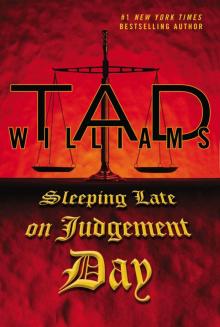 Sleeping Late on Judgement Day
Sleeping Late on Judgement Day Stone of Farewell
Stone of Farewell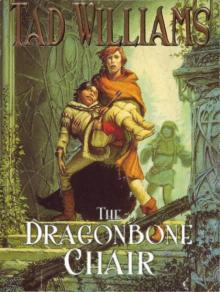 The Dragonbone Chair
The Dragonbone Chair Sea of Silver Light
Sea of Silver Light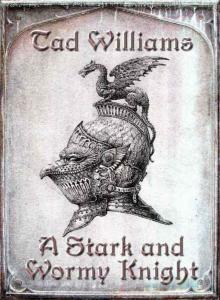 A Stark and Wormy Knight
A Stark and Wormy Knight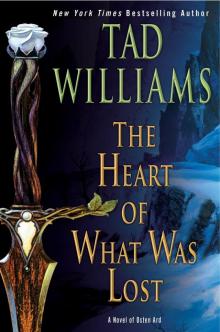 The Heart of What Was Lost
The Heart of What Was Lost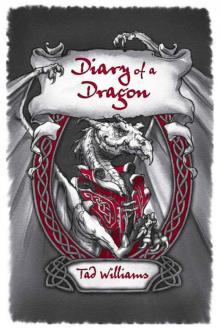 Diary of a Dragon
Diary of a Dragon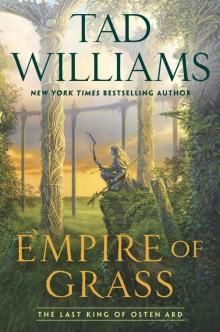 Last King of Osten Ard 02 - Empire of Grass
Last King of Osten Ard 02 - Empire of Grass To Green Angel Tower, Volume 1
To Green Angel Tower, Volume 1 The Dirty Streets of Heaven
The Dirty Streets of Heaven River of Blue Fire
River of Blue Fire The Very Best of Tad Williams
The Very Best of Tad Williams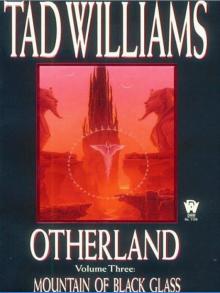 Mountain of Black Glass
Mountain of Black Glass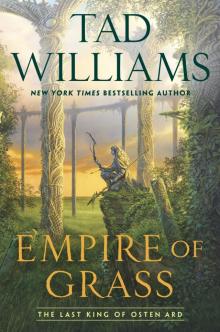 Empire of Grass
Empire of Grass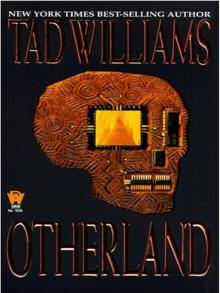 City of Golden Shadow
City of Golden Shadow Happy Hour in Hell
Happy Hour in Hell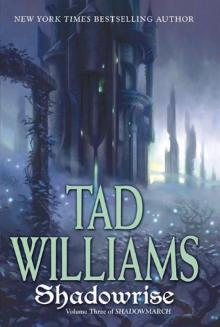 Shadowrise
Shadowrise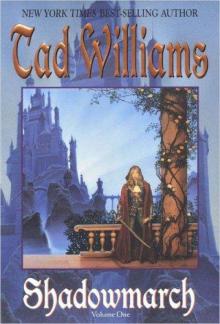 Shadowmarch
Shadowmarch Brothers of the Wind
Brothers of the Wind Shadowheart
Shadowheart Bobby Dollar 02 - Happy Hour In Hell
Bobby Dollar 02 - Happy Hour In Hell The War of the Flowers
The War of the Flowers The Dirty Streets of Heaven bd-1
The Dirty Streets of Heaven bd-1 Tad Williams - The War of the Flowers (retail) (pdf)
Tad Williams - The War of the Flowers (retail) (pdf) Shadowheart s-4
Shadowheart s-4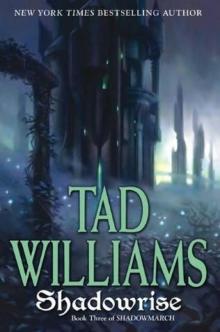 Shadowrise s-3
Shadowrise s-3 The Dirty Streets of Heaven: Volume One of Bobby Dollar
The Dirty Streets of Heaven: Volume One of Bobby Dollar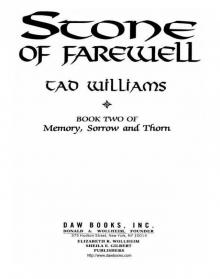 The Stone of Farewell
The Stone of Farewell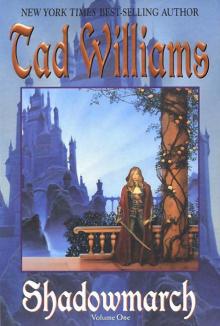 (Shadowmarch #1) Shadowmarch
(Shadowmarch #1) Shadowmarch The Secrets of Ordinary Farm of-2
The Secrets of Ordinary Farm of-2 Shadowmarch s-1
Shadowmarch s-1![Bobby Dollar [04] God Rest Ye Merry, Gentlepig Read online](http://i1.bookreadfree.com/i1/04/06/bobby_dollar_04_god_rest_ye_merry_gentlepig_preview.jpg) Bobby Dollar [04] God Rest Ye Merry, Gentlepig
Bobby Dollar [04] God Rest Ye Merry, Gentlepig Lightspeed Issue 33
Lightspeed Issue 33 Sea of Silver Light o-4
Sea of Silver Light o-4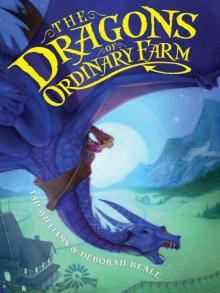 The Dragons of Ordinary Farm of-1
The Dragons of Ordinary Farm of-1 Shadowplay s-2
Shadowplay s-2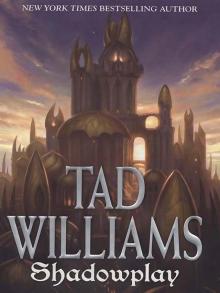 (Shadowmarch #2) Shadowplay
(Shadowmarch #2) Shadowplay